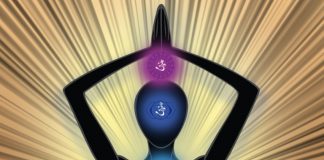Yoga, being an ancient practice, has evolved and branched out over time into numerous forms. When this practice was developed as far back as in the BC’s, it was meant to be a disciplined and accurate practice without scope for deviation or distortion. The reason was simple. Any distortion of the practice could cause damage to the system. Therefore, it was imparted in the physical presence of a trained teacher. Today’s classical yoga retains the original discipline and accuracy and is scientific as the effects of the practices can be measured. It just that the scientific community has not spent the time to explore this science and measure the effects accordingly.
To understand how yoga was originally developed and compiled one has to delve into its history. The origins of yoga are shrouded in mystery. Many experts believe yoga to have originated and practiced somewhere around 10,000 BC in the Indus Saraswati Valley Civilization in what is now India. There is no known record of this as yoga was imparted orally from the teacher to the student. Over the centuries, the science of yoga took on a life of its own and branched off into hundreds of systems. Around 400 CE a famous yogi and sage called Patañjali saw that it had become too complex and diversified for anyone to grasp in a meaningful way. So, he compiled these different forms into Yoga Sutras, which lie at the heart of yoga teaching and practice in modern times. And so Patañjali is known as the father of modern yoga.
The yoga sutras expound on techniques to evolve human consciousness to the highest level (also called the ultimate reality or liberation or Moksha). Within the yoga sutras, Patañjali lays out the 8 limbs of yoga known as Ashtanga yoga, through the practice of which one can attain to the highest. The health advantages are merely fringe benefits or low hanging fruit along the way to liberation.
Patañjali divided his Yoga Sutras into four chapters or books. The Ashtanga yoga is contained in the ‘Sadhana Pada” chapter and describes the 8 fold path to attain the highest state of consciousness. The 8 steps are briefly elaborated below.

- Yamas are rules of moral code and include ahimsa (non-violence or non-harming), satya(truthfulness), asteya (non-stealing), bramacharya (wise use of sexual energy), and aparigraha (non-possessiveness).
- Niyamas are rules of personal behavior including saucha (purity), santosha (contentment), tapas (discipline or austerity), svadhyaya (spiritual studies), and Ishvara Pranidhana (surrender to higher power).
- Asana refers to yoga postures but in Patañjali initial practice, it referred to mastering the body to sit still for meditation. The practice of yoga asanas came only later, which helped disciples ready their bodies for meditation. This is the type of yoga that is most popular today.
- Pranayama are yoga breathing techniques designed to control prana or vital life force.
- Pratyahara means withdrawal of the senses. It is during this stage that we make the conscious effort to draw our awareness away from the external world and into our inner.
- Dharana refers to concentration. This practice allows us to slow down the thinking process and to focus on a single point (like a mantra), creating mindfulness, and moving us to a state of meditation
- Dhyana is the practice of meditation. Dhyana is described as continuous flow of perception. Dharana is likened to focusing on individual drops of rain, Dhyana is being absorbed into the continuous flow of the water falling.
- Samadhi is the state of ecstasy or bliss. A state of mind where there are no thoughts and there is no object of meditation, where the mind is fully expanded and in a state of “pure unbounded awareness.”
Yoga is an ancient practice that has over time absorbed several different practices. Today there are various brances of yoga each with its own system of practices and devoted followers. Regardless of the type of practice followed it is true that yoga brings tremendous mental, physcial and spiritual benefits. In this increasing fast paced and chaotic world where everyone may not yet be ready for ultimate liberation, turning to yoga can bring meaning and fulfillment in life.
47 Most Famous Motivational Quotes of All-Time
49 Greatest Love Quotes
37 Inspirational Quotes that Will Change Your Life






























